Cleaning a Senior Dog’s Teeth: Anesthesia-Free Dog Dental
I’m going to come clean: I don’t brush my dogs’ teeth.
I’m ashamed to admit this, since dog dental care is so important. But between nail clippings, fur brushing, ear cleanings, fold maintenance and other regular grooming, teeth brushing takes a back seat. Not to mention the fact that both Boogie and Marcelo turn into land piranhas the minute you try to get close to their teeth. They don’t exactly make it easy.
Apparently, I’m not alone. According to the American Veterinary Medical Association, only 1% of dog owners brush their pet’s teeth regularly. Yikes.
But that doesn’t mean I’ve totally abandoned my dogs’ dental hygiene. There are other things you can do, besides brushing, that will help keep your dog’s teeth in good condition. They’ve gotten dentals at the vet, they eat a balanced diet, they chew on firm objects and more.
And recently, we experimented with anesthesia free dog dentals. Boogie and Marcelo are both seniors now, and we wanted to try health care that wouldn’t require them to be put under.
Check out how our experience went, and what other steps we’re taking to keep their teeth clean.

Why is dog dental care so important?
Bad dental hygiene is more than just stinky breath.
A toothache, sore gums and bacteria can cause things like infections, pain, and stress.
It gets worse. What starts off as plague can quickly turn into dental disease.
Here’s how it happens: bacteria turns into plaque that sticks to the surface of the teeth. Then minerals in your dog’s saliva harden the plaque into tartar, which spreads under the gum line. The bacteria secretes gross toxins that can enter the bloodstream and spread to the heart, kidneys and liver.
Left untreated, these issues can worsen and make your dog really sick.
What causes terrible dog teeth
You’re probably thinking, duh, neglect! Yes, you’re right, but there are a lot of other factors that contribute to your dog’s dental hygiene.

Breed
Some breeds are predisposed to dental issues.
Small dogs with short snouts and cramped jaws (like pugs and chihuahuas!), tend to have more issues with plaque, tartar and dental calculus buildup due to crowding of teeth.
Maltese tend to suffer from late development of teeth, and Yorkshire Terriers often have enamel hypoplasia, where enamel dissolves or doesn’t exist.
These issues aren’t limited to small breeds.
Greyhounds also tend to suffer from enamel hypoplasia, and Boxers often have teeth crowding and/or underbites.
Age
Dental issues come to the forefront when dogs reach their senior years.
This is partly due to years of build up, and diminished immune systems that may be less capable of fighting off the effects of bacteria.
Just like with humans, you can expect an older dog’s teeth to be in worse condition than a puppy’s.
Number of teeth
Fewer teeth doesn’t necessarily mean fewer problems.
When teeth chew, they rub against each other, scraping off plaque and self cleaning.
When some are missing, there might be teeth left flying solo, with no other hard surfaces to rub on. This makes the existing teeth susceptible to further plaque build up and tartar.
Diet
You are what you eat, so it should be no surprise that dental problems are associated with a diet of highly processed, manufactured pet foods, especially those high in cereals. I’m talking kibble that you buy at the pet store.
High levels of sugars and simple carbohydrates found in kibble sustain oral bacteria, helping it thrive in your dog’s mouth.
Get rid of the kibble, and feed your dog a balanced, high quality raw diet. Raw meaty bone diets are great for dog teeth. Even ground raw diets help prevent tartar build up, due to the natural enzymes in meat, and the meat doesn’t stick to teeth, unlike diets that are high in starch.
If raw isn’t possible, then a balanced high quality cooked or canned diet is an acceptable alternative.
Lack of chewing
The simple mechanical action of chewing can make a difference in your dog’s oral hygiene. It reduces plaque build up. The gnawing scrapes plaque off your dog’s teeth, and studies have shown that dogs who chew actively have less plaque build-up.
If your dog has a diet of soft food, and doesn’t spend any time chewing something hard, it will allow plaque and tartar to form more rapidly.
Our experience with anesthesia free dog dental
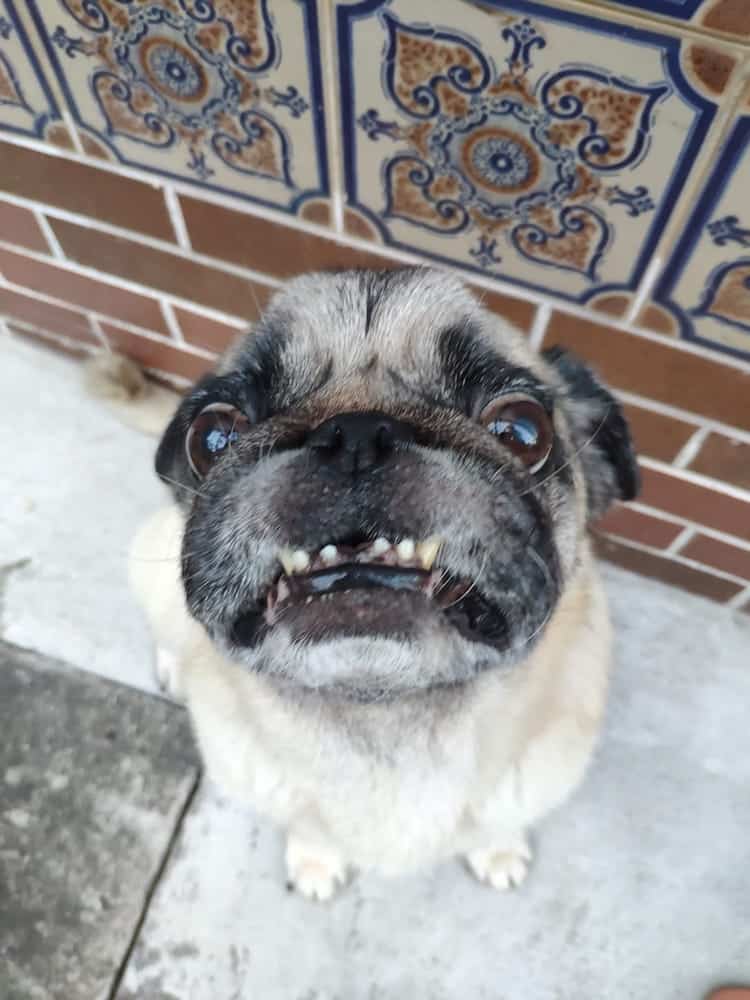
We were used to getting Boogie and Marcelo dentals at the vet every year or two. This included blood exams, anesthesia and lots of nerves on my part.
But as they got older, we worried about the stress of putting them under. Boogie is a pug, so he has a flat nose. Brachycephalic breeds have anatomic issues, like narrow airways, that present challenges that don’t exist amongst other breeds.
We began to seek out other, more holistic approaches.
Enter anesthesia free dog dentals.
Non-anesthetic dental cleanings are known as Professional Outpatient Preventive Dentistry (POPD).
It’s a process in which your dog’s teeth are cleaned without the use of anesthesia.
Right off the bat, I have to warn you that non-anesthetic dental cleanings are incredibly controversial. Both the American Veterinary Dental College (AVDC) and the American Veterinary Medical Association (AVMA) condemn the practice. They believe the procedure can be traumatizing, and because only plaque above the gum line is scraped away, leaving tartar beneath the gums intact.
When done correctly, however, I found non-anesthetic dental cleanings to be effective in some ways. After extensive research and speaking to professionals, I decided to give them a try.
That morning, we gave both Boogie and Marcelo some CBD oil. Marcelo, our 4lb Chihuahua, was up first. The dental professional asked us to leave the room, so our presence wouldn’t stress or distract Marcelo.
During the procedure, dogs are approached much like a dentist treats a child during a first-time dental visit: with a lot of patience, soothing energy, and a build up of trust.
The procedure went find and we were able to see Marcelo right after. His teeth looked visibly cleaner. Then it was Boogie’s turn.
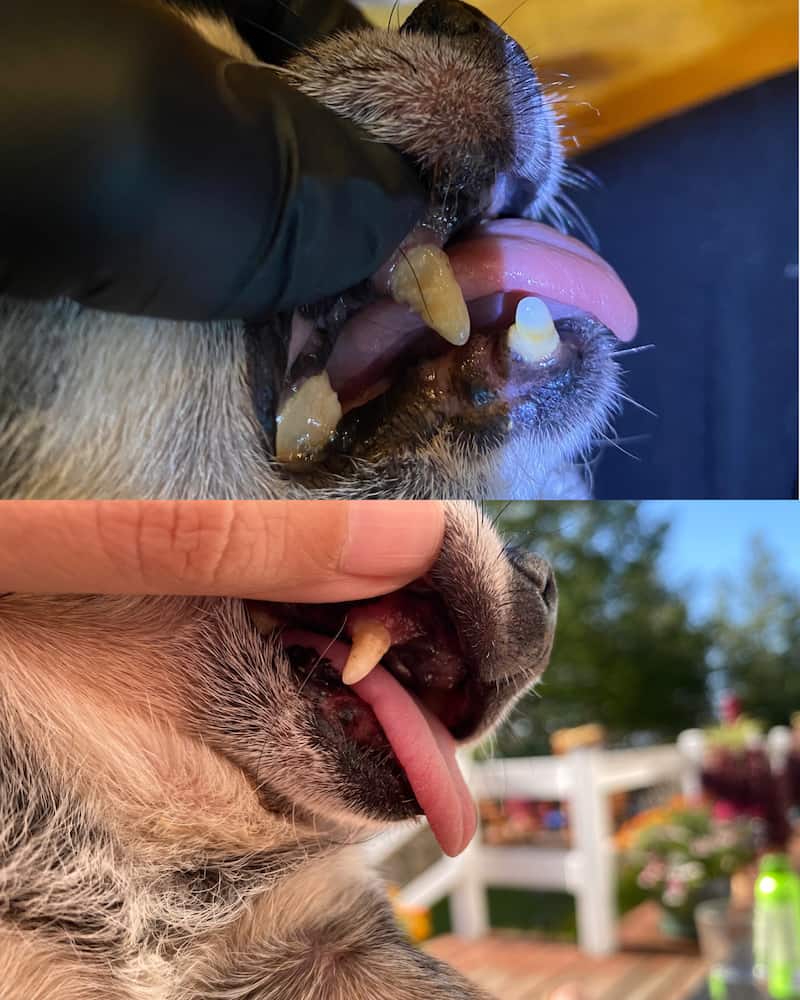
The dental professional was patient, but the techniques that worked on Marcelo did not work on Boogie. He was agitated, and wouldn’t settle down, so we ultimately decided that Boogie wasn’t a good candidate. Pets are never forced or bullied into submission, and we didn’t want to hurt or traumatize him, so we didn’t move forward with the procedure.
Is a non-anesthetic dental cleaning for your dog worth it?
Overall, I thought the cleaning was worth it.
Even though Boogie wasn’t able to do it, it was worth it for Marcelo.
Like with everything, there’s both a good and bad side to anesthesia-free dog dentals.
The Pros
- It helps keep plaque and tartar at bay.
- It does not require anesthesia.
- It’s often cheaper than a traditional dog dental.
The Cons
- It doesn’t treat under the gums.
- It can be stressful for certain dogs.
- It usually works best for small to medium sized dogs – large dogs may be unsuitable.
- There is risk of injury if your dog moves too much during the procedure.
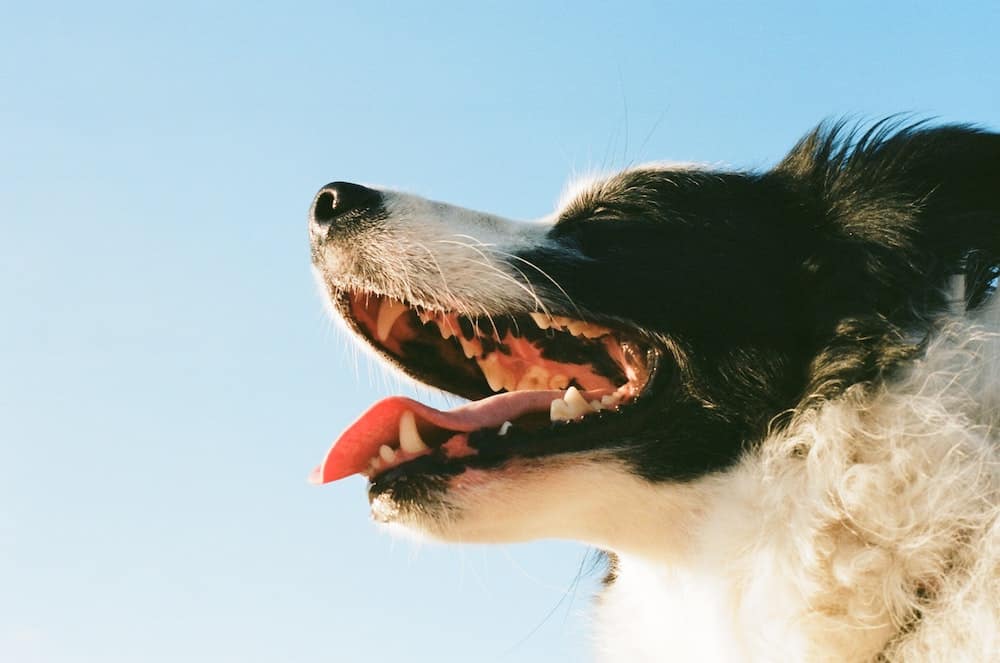
Is an anesthesia-free dog dental right for you and your dog?
Certain dogs, like Marcelo, are good candidates for this type of procedure, while others, like Boogie, aren’t.
A no anesthesia teeth cleaning might work for your dog if:
- Your dog can’t go under general anesthesia, like those with chronic kidney, liver or heart disease, or your dog is at high-risk.
- You’d like to remove buildup in between regular dentals.
- Your dog is very young and has mild buildup.
Your dog will not be a good candidate for this type of cleaning if:
- Your dog is aggressive.
- Your dog has advanced dental disease and needs a more thorough cleaning under the gum line.
In the end, you know your dog best, and with the advice of your veterinarian, can assess whether this is a good option for you.
Other ways to keep your dog’s teeth clean
There are many things you can do to keep your dog’s teeth clean, besides traditional or anesthesia-free dentals. Here are a few options that can be added to your dog’s daily routine:
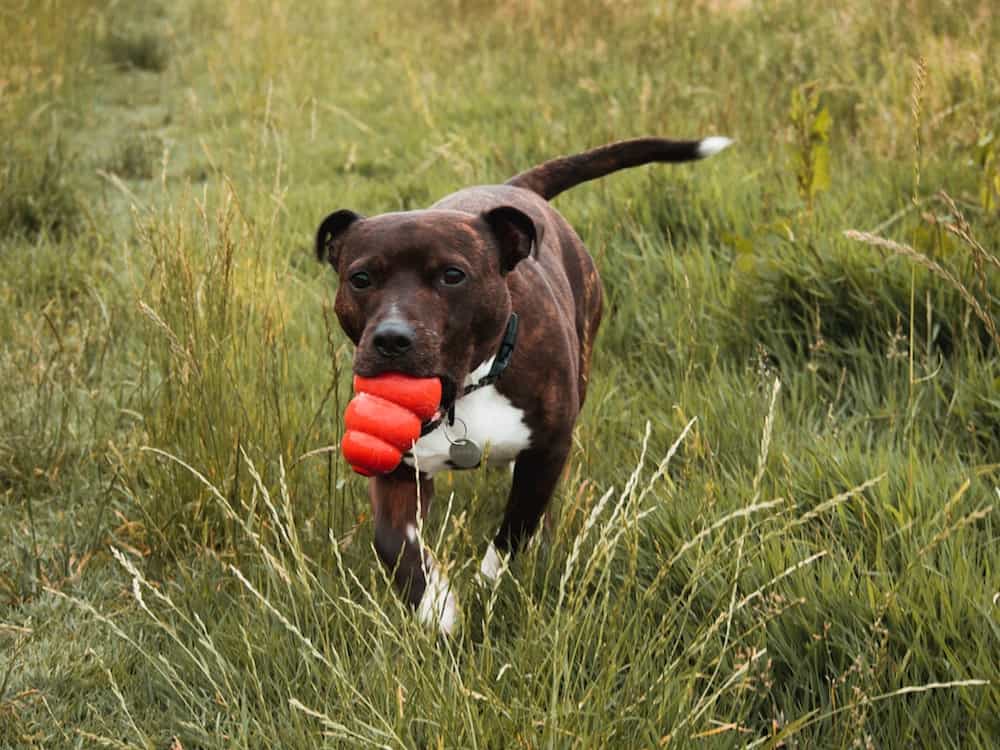
Hard Chewing
As mentioned above, chewing is an important part of your dog’s dental hygiene. The gnawing scrapes plaque off your dog’s teeth
Raw meaty bones are great for dogs, both for the chewing and the enzymes in the meat.
Besides bones, there are many products on the market that your dog can chew to remove plaque and tartar, both edible and not edible. The Veterinary Oral Health Council (VOHC) publishes a list of products that have been tested and proven to successfully remove plaque and tartar. Check out the list to see which items have been given their seal of approval.
Here are some of our favorites:
- Dog Chew Toothbrush Toy
- Greenies Natural Dental Dog Treats
- Whimzees Natural Grain Free Dental Dog Treats
Feed them Green Beans
Green beans are not only a healthy snack, but they’re great for loosening the plaque in your dog’s mouth.
Frozen, fresh, or canned green beans work, just be sure there is no sodium. They can be mixed into your dog’s food or given to them as a snack.
Bonus: green beans are also great to help your dog lose weight!
Helpful Products
There are many helpful products on the market designed to help clean your dog’s teeth. Here are a few popular ones:
Tooth Wipes: wipes fight plaque and bacteria, and help freshen breath.
Dental rinses: antimicrobial rinses are designed to kill pathogenic bacteria that can cause gum infection.
Dental sprays: alcohol-free mouthwashes kill bacteria to stop decay and bad breath.
Dental drops: drops kill bacteria in your dog’s mouth and reduce tarter.
Water additives: helps freshen breath and defends against plaque and tartar.
Regular Brushing
Ok ok, I know, why is this listed if I don’t even do it? Just because I’m negligent, doesn’t mean you have to be!
Brushing prevents plaque buildup, and it’s worth it to turn it into a habit.
This three-sided brush is dishwasher safe and has a nice handle for a firm grip to really get in there.
Make sure you use dog-friendly toothpaste – human toothpaste contains xylitol, which is toxic to dogs. Arm & Hammer has a lot of good options, and this organic toothpaste is great too.
What you can do to make dog dental care easier
Dental hygiene, just like grooming and training, is something you should start right after welcoming your dog to their new home.
The more you do it, the better, and the easier it gets.
When I adopted both Boogie and Marcelo, I got them much needed dentals at the vet right away. While that was a good move, I should have also started a dental hygiene routine at home to get them used to getting their teeth brushed and having their mouths touched.
But no matter what you do, whether it be traditional dentals, anesthesia-free dentals, or use dental hygiene products, the important thing is to do something! Make your dog’s dental hygiene a priority and weave it into your dog’s health care. It’s important.
What has your journey with dog dental hygiene been like? Do you brush your dog’s teeth every day?
Click here for more dog health info.
Pin for later!
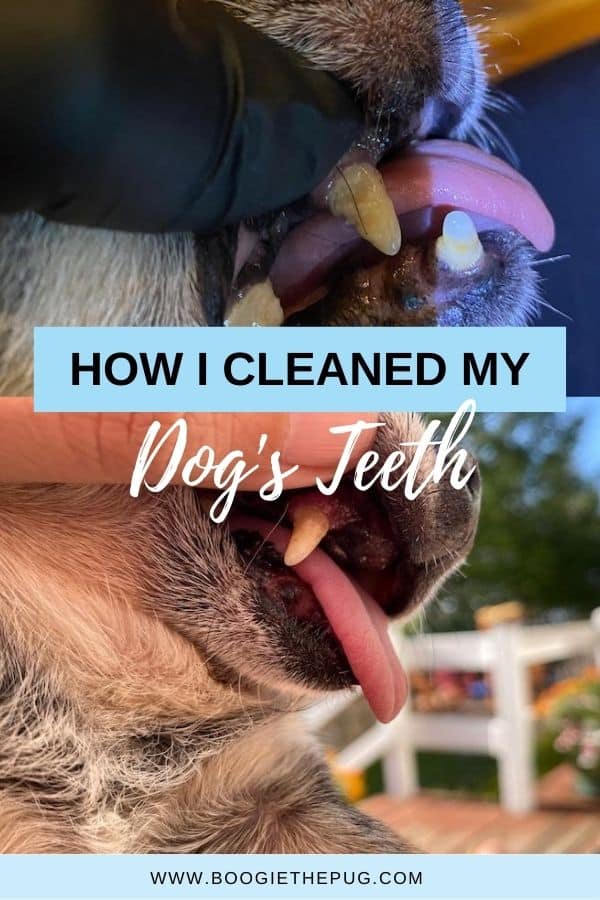



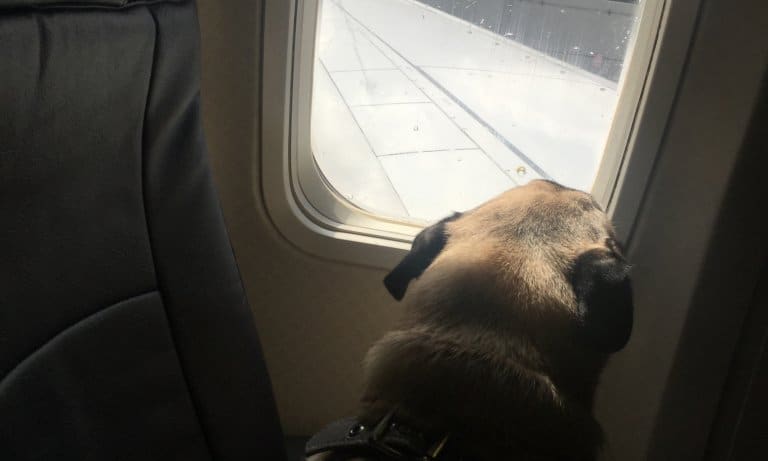
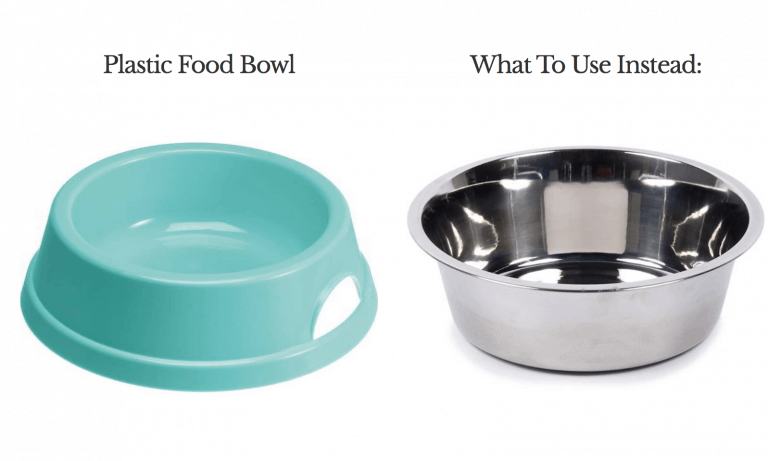
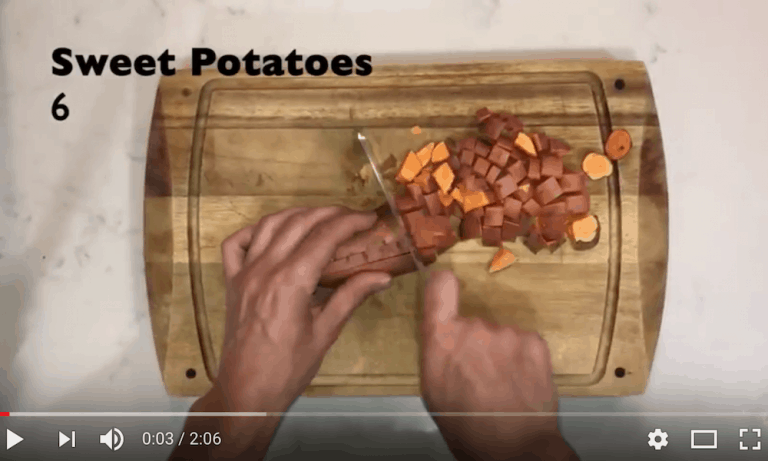
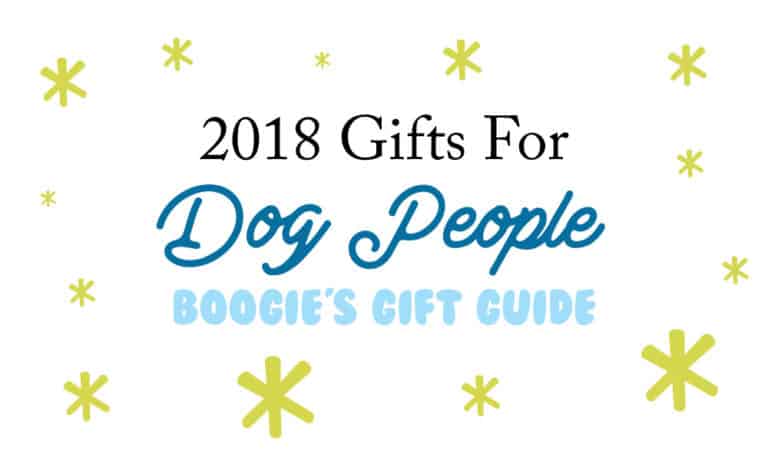

I’m so happy that you took the time to write this amazing article. Already know that taking care of your dog’s teeth is extremely important. I didn’t pay attention to it with my first dog and lesson learned.Dental hygiene is the must. Love the Boggie’s pearly whites 😀
My dog is going on 12 and I’ve never brushed her teeth. Unfortunately now I’ve noticed how bad her back teeth look and idk what is the right thing to do to help her. PLEASE hELP ME.
Take her to the vet – they’ll be able to advise what steps to take moving forward.